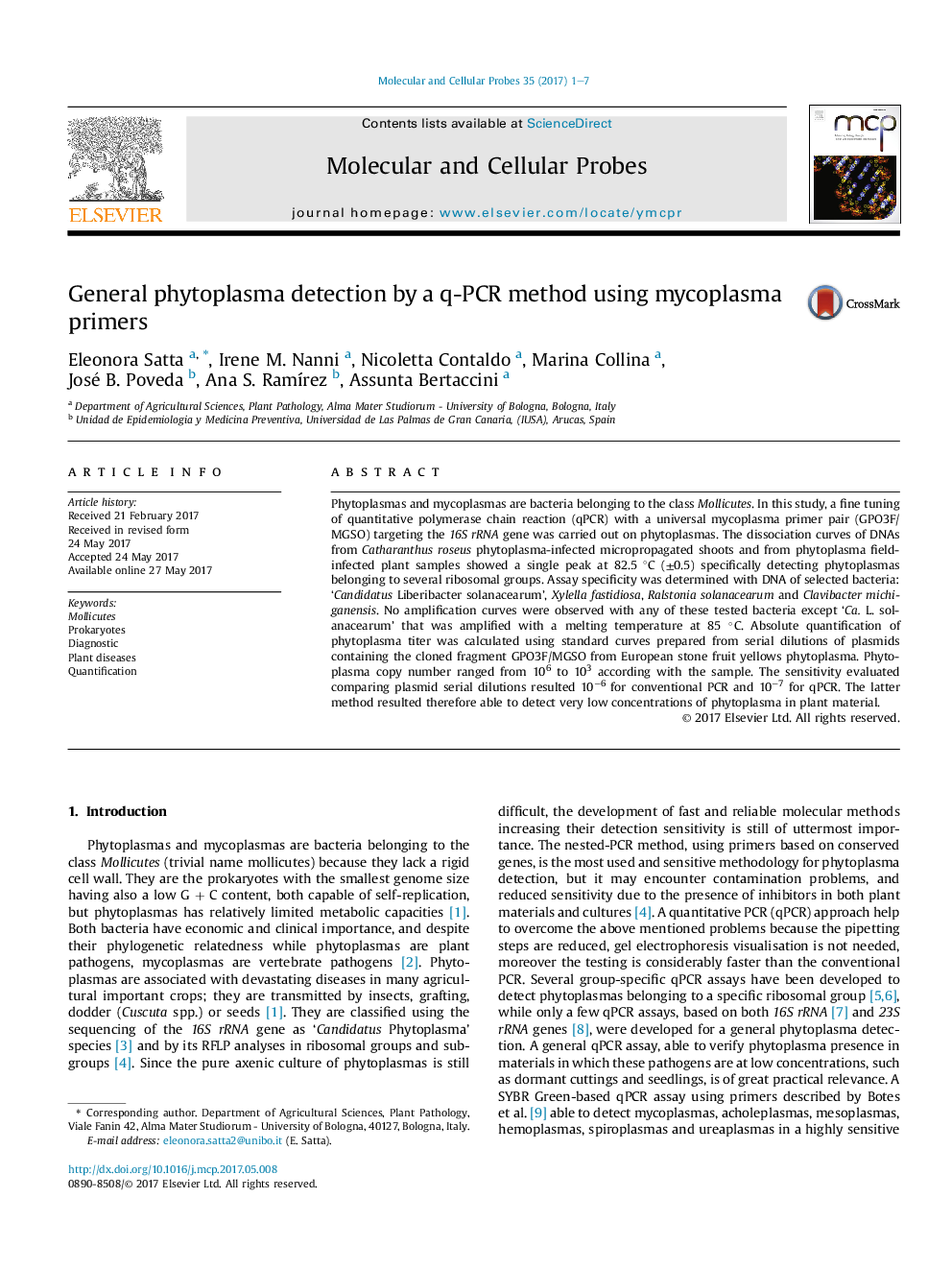| Article ID | Journal | Published Year | Pages | File Type |
|---|---|---|---|---|
| 5534466 | Molecular and Cellular Probes | 2017 | 7 Pages |
â¢A general qPCR to detect several phytoplasma ribosomal groups has been developed.â¢A primer pair designed for mycoplasmas also amplify phytoplasmas.â¢The melting temperature allows to discriminate between mollicute and non-mollicute.
Phytoplasmas and mycoplasmas are bacteria belonging to the class Mollicutes. In this study, a fine tuning of quantitative polymerase chain reaction (qPCR) with a universal mycoplasma primer pair (GPO3F/MGSO) targeting the 16S rRNA gene was carried out on phytoplasmas. The dissociation curves of DNAs from Catharanthus roseus phytoplasma-infected micropropagated shoots and from phytoplasma field-infected plant samples showed a single peak at 82.5 °C (±0.5) specifically detecting phytoplasmas belonging to several ribosomal groups. Assay specificity was determined with DNA of selected bacteria: 'Candidatus Liberibacter solanacearum', Xylella fastidiosa, Ralstonia solanacearum and Clavibacter michiganensis. No amplification curves were observed with any of these tested bacteria except 'Ca. L. solanacearum' that was amplified with a melting temperature at 85 °C. Absolute quantification of phytoplasma titer was calculated using standard curves prepared from serial dilutions of plasmids containing the cloned fragment GPO3F/MGSO from European stone fruit yellows phytoplasma. Phytoplasma copy number ranged from 106 to 103 according with the sample. The sensitivity evaluated comparing plasmid serial dilutions resulted 10â6 for conventional PCR and 10â7 for qPCR. The latter method resulted therefore able to detect very low concentrations of phytoplasma in plant material.
